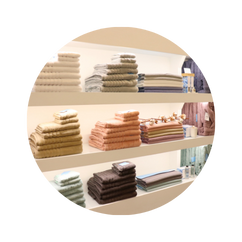Sometimes acquiring bedding can be somewhat a bit complicated, and not precisely because of availability, but rather the opposite: for the variety. And today there is a huge assortment at our disposal, with notable differences with respect to the tissues and their amount of threads.
But what really means the amount of threads that make up a home textile garment?

Today we are going to comment in a simple way. Depending on the crusade of threads we will obtain different qualities and characteristics. These threads can be transversal (to what we know as "plot") and longitudinal (which we call "warp"). Both threads, plot (horizontal threads) and warp (vertical threads), are intertwined with each other when woven in the looms. The way in which these threads are intersecting is called ligament, and the process by which every time the plot threads pass between the warp threads, it is called the pass.
The amount of threads of a garment specifically refers to the number of threads per square inch (2.54 centimeters). To give an example, in the case of sheets, the more threads compose the tissue, softer, consistent and resistant will be.

But it is important to clarify that the amount of threads in a garment, always respecting minimal values, does not necessarily imply that it is of higher quality.
The truth about threads
It is common to use the amount of threads as a reference when measuring quality, but this should be done as long as the rest of details and product factors are equal.
And it is that for some years, it seems that what could be called as an obsessive career for the amount of threads, always looking for the maximum possible number. On many occasions, it is common to use as a claim when selling an exorbitant amount of threads (500 wires, 1000 wires, 1800 wires ... 2000 threads!) In textiles that have been made with weak threads or simple or directly mediocre qualities. That is why people do not understand that these garments last less than 180 -wire quality fabrics, and usually consider that they will not have cared for them well, assuming responsibility.
The number of threads should never be the only parameter on which to be based to ensure that we are acquiring a quality product. Sometimes it is common to use shorter and worse quality fibers to make it considered four threads. This happens for example in 150 -wire fabrics, which through this questionable method could become considered 600 wires, but with a remarkably lower quality.
In textile LLAR we maintain a clear philosophy in which we always seek a balance between quality and honest prices.



Leave a comment